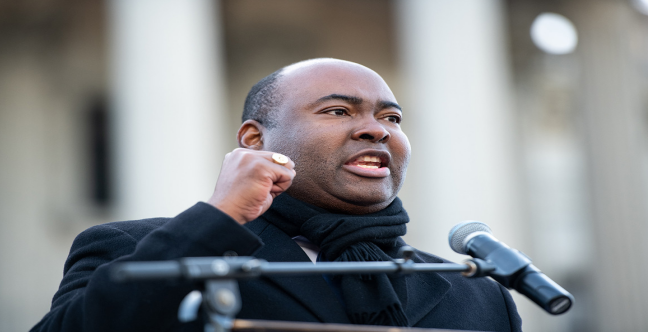Black people are still killed by police at a higher rate than other groups in USA

Williams claims that “the system wasn’t created to defend Black people.” According to the research, “we’re not going to see this cease until we get to policies that deconstruct the existing system,” she claims. The idea that increasing awareness of police brutality will reduce it is false, according to Rashawn Ray [4-6].
There has to be a cultural transition from the “warrior-versus-them mindset” to the “guard guardian mentality,” according to a civil rights attorney. The stats, according to an organizer who describes herself as a “staunch abolitionist,” are not shocking. She claims that these are a result of inaction on policies to alter officers’ views [7-9].
According to Douglas, “They don’t have a connection to Black people’s humanity, that feeling of humanity that’s essential to care for people on a human basis.” None of the four cops who were tried in the Rodney King beating case in 1992 resided in South Central Los Angeles. According to a Star-Tribune research, just 8% of the cops in Minneapolis, the city where Floyd was slain, reside there [10, 11].
“I can’t conceive of any circumstances under which a piece of technology could perform so poorly and yet obtain further finance,” said Mac. Mac: After Floyd’s passing, legislators in several localities increased or reinstated police funding. That took place while the national rate of police killings increased, especially those of Black Americans. As Mac points out, “So much of it got lost in the ‘How can you take money away from the cops to be safe’ argument [12-14].
According to Mac, the beginnings of police may be traced back to the time of slavery, when “slave patrols” kept an eye on Black slaves. Gipson: “When people’s lives are taken at the hands of police, I was shocked before and I’m outraged today.” Rashawn Ray: “On average, a police officer kills someone every eight hours.” That is a common occurrence [15, 16].
Many officer-related charges are resolved out of court, according to civil rights attorney Daryl K. Washington. The prosecution of the cases, according to Washington, would reveal the corruption and compel “these police departments to modify their recruiting policies.” Officers are, in part, shielded from being held personally accountable for deploying lethal force by qualified immunity [17, 18].
Legislation from Mike Gipson that Governor Gavin Newsom signed into law prohibits police from using chokeholds and from placing their knees on the necks of suspects. Before Floyd’s death was caught on camera, James Samuel Jr., a former Air Force engineer, was disturbed by officer-involved shootings. Floyd’s passing spurred his plans to develop Anjel Tech, an app that would record interactions with police enforcement officials in real time [19, 20].
Generally, According to data from The Washington Post, police fatally shot at least 1,055 individuals in 2017. The number of shootings is more than in 2020 (1,021) and 2019 combined (999). Despite making only 13% of the population, black people are shot by police twice as frequently as white people. Some communities raised or restored police budget after Floyd’s passing. That occurred while the number of police killings nationwide rose. A lot of charges against officers are settled out of court. The cases would be prosecuted, exposing the corruption, and forcing “these police departments to change their recruiting procedures.”
References
[1] M. Mann, “Have wars and violence declined?,” Theory and Society, vol. 47, no. 1, pp. 37-60, 2018.
[2] R. VerBruggen, “Fatal Police Shootings and Race: A Review of the Evidence and Suggestions for Future Research,” Manhattan Institut Report, pp. 1-32, 2022.
[3] S. Rushin and R. Michalski, “Police funding,” Fla. L. Rev., vol. 72, p. 277, 2020.
[4] H. A. Williams, Self-taught: African American education in slavery and freedom. Univ of North Carolina Press, 2009.
[5] P. Williams, “Spirit-murdering the messenger: The discourse of fingerpointing as the law’s response to racism,” U. Miami L. Rev., vol. 42, p. 127, 1987.
[6] B. Denizet-Lewis, “Double lives on the down low,” New York Times Magazine, vol. 3, pp. 28-33, 2003.
[7] A. Ferrer, Insurgent Cuba: race, nation, and revolution, 1868-1898. Univ of North Carolina Press, 1999.
[8] J. Bindel and J. Bindel, The pimping of prostitution. Springer, 2017.
[9] H. B. Hargrove, Black union soldiers in the civil war. McFarland, 2003.
[10] K. B. Douglas, Sexuality and the Black church: A womanist perspective. Orbis Books, 2018.
[11] N. Geras, Solidarity in the conversation of humankind: The ungroundable liberalism of Richard Rorty. Verso, 1995.
[12] M. Fidler, “Local police surveillance and the administrative Fourth Amendment,” Santa Clara High Tech. LJ, vol. 36, p. 481, 2019.
[13] J. Streeter, “l? OCUS E lu Produced by,” 1990.
[14] H. Aviram, Cheap on crime: Recession-era politics and the transformation of American punishment. University of California Press, 2015.
[15] R. Gibson and J. P. Singh, Wall of silence: the untold story of the medical mistakes that kill and injure millions of Americans. Regnery Publishing, 2003.
[16] A. Sierz, In-yer-face theatre: British drama today. Faber & Faber, 2014.
[17] E. Lumsden, “How much is police brutality costing America,” U. Haw. L. Rev., vol. 40, p. 141, 2017.
[18] T. L. Winright, The challenge of policing: An analysis in Christian social ethics. University of Notre Dame, 2002.
[19] A. S. Vitale, The end of policing. Verso Books, 2021.
[20] S. Early, Refinery town: Big oil, big money, and the remaking of an American city. Beacon Press, 2017.
